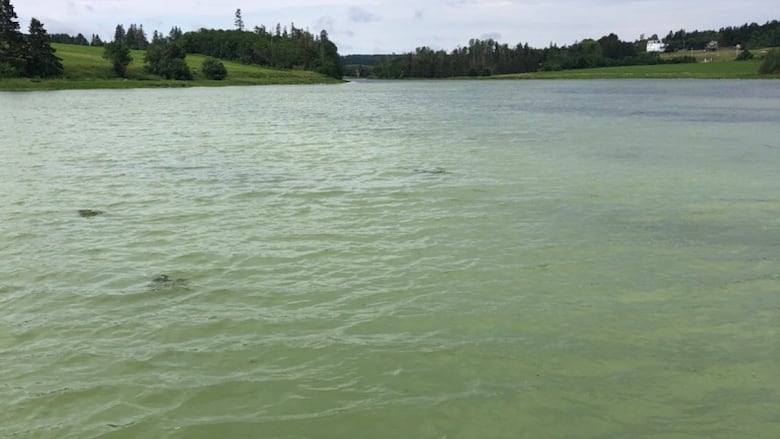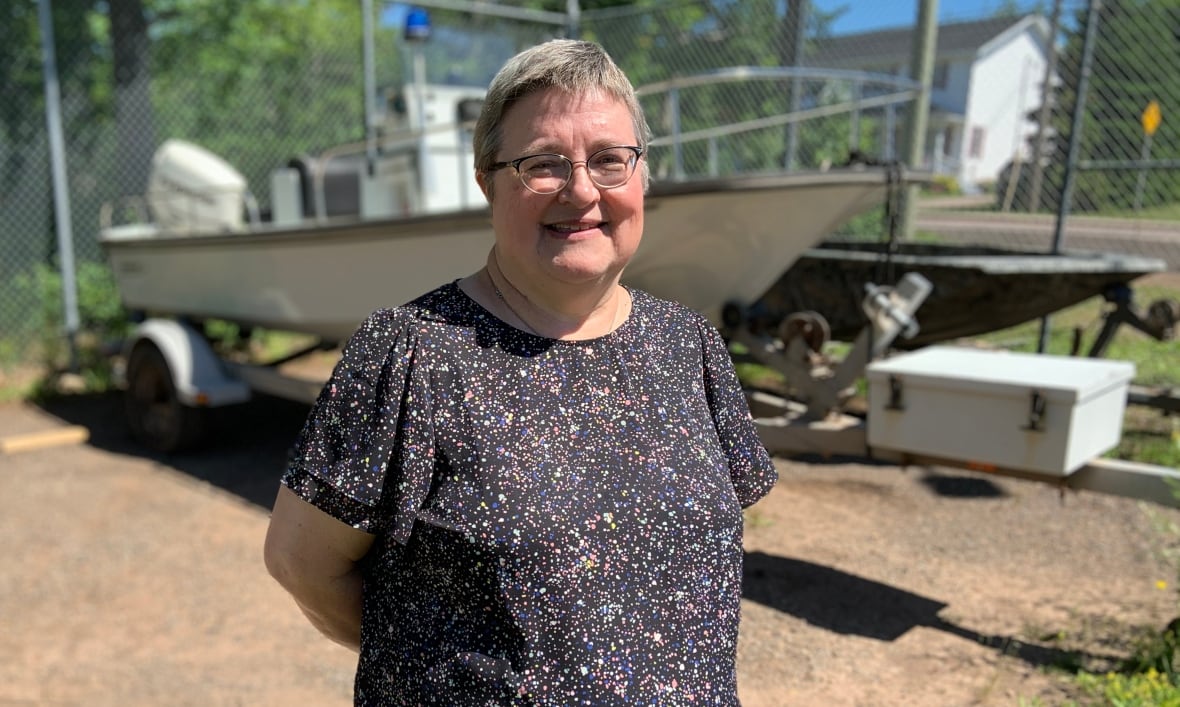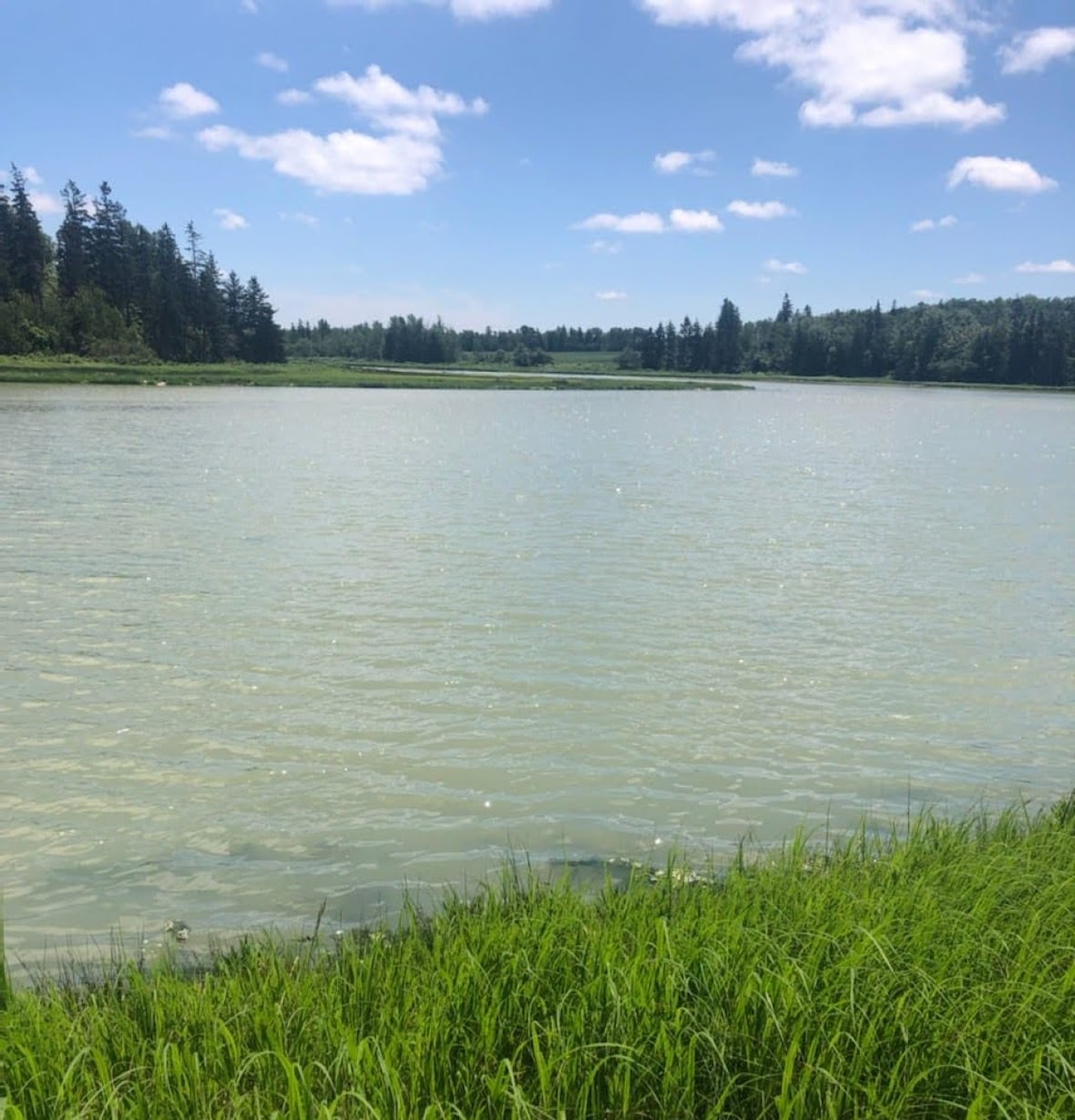Anoxic events in P.E.I. waterways ahead of schedule with 9 already this year
Oxygen levels in the water decline when anoxic events occur

Nine waterways on P.E.I. have experienced anoxic events so far this year, something experts say is unusual.
Anoxic events are annual occurrences in P.E.I.'s estuaries and bays. The season for them normally runs from mid-July to as late as October with an average of about 10-15 events a year.
"What happens is the water will turn a, sometimes milky green, or milky white colour, and there will be a bad odour. Some people call it like a rotten-egg- or rotten-turnip-like odour," said Cindy Crane, surface water biologist with the Department of Environment, Water and Climate Change.
It also means the level of oxygen in the waterway is low, said Crane, which poses a risk for aquatic life.
It's been a while since there have been this many events by this time in the summer.
During these events we do see die-off of some organisms that can't avoid the area.— Cindy Crane, Department of Environment, Water and Climate Change
"It's been quite a few years, probably maybe eight or nine years, since we've had that number of estuaries showing up as anoxic this early in the season," said Crane.
The events are caused by sea lettuce dying off, said Crane. The decaying process of that lettuce takes the oxygen out of the waterway. The milky green or white colours are caused by a certain bacteria.
A couple of things might be causing these events to happen at the same time, said Crane. First off, the warm weather the Island has been experiencing.

"When we get those warm conditions that sometimes helps that die-off of the sea lettuce," she said.
"I think also this year it was a relatively early spring. So the sea lettuce was actually growing quite well for quite a long time before we hit this period of warm weather in the last week or so."
The events can be detrimental to the things that live in the waterways where they are happening.
"During these events we do see die-off of some organisms that can't avoid the area. These would be things like small fish and invertebrates and organisms like that," she said.
Monitoring and treatment
Crane and her team monitor about 10 sites on the Island continuously for dissolved oxygen levels, which is done with special tools that read levels once every hour, said Crane.
Crane and her team also rely on watershed groups and citizens who might notice something off with the waterway. When Crane gets those reports, a team can go out and investigate.

There are a number of estuaries and bays on P.E.I. that have annual anoxic events, but fixing the problem is complicated, said Crane.
"There's nothing that you can add to the water unfortunately to make it go away," she said.
"The growth of phytoplankton and algae, like sea lettuce, is all related to nutrient levels in our rivers. So if we can do something to address nutrient levels that will be part of the solution for sure."